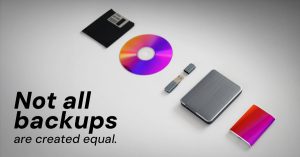When disruption strikes, there are only two outcomes: you’re prepared, or you’re caught off guard. Businesses that thrive through crises don’t rely on luck; they rely on strategies that weave resilience into their DNA. It’s not about waiting for the storm and reacting—it’s about anticipating challenges, building recovery into the fabric of operations, and ensuring every function can bounce back swiftly.
For business leaders, the question isn’t if disruptions will happen, but when. From natural disasters and cyberattacks to system outages and global crises, the spectrum of threats continues to evolve. Yet one truth remains consistent: how fast you recover depends on the strength of your continuity plan.
That’s where a robust strategy becomes more than a safety measure—it’s a competitive advantage.
The Cost of Standing Still
Recovery isn’t only about financial protection. A single disruption can trigger cascading effects across your reputation, client trust, and internal morale.
-
Downtime drains revenue: Every hour of inactivity equals missed opportunities and mounting expenses.
-
Clients lose confidence: Reliability is non-negotiable for your clients. Repeated disruptions without quick recovery erode trust.
-
Teams face stress and inefficiency: Employees working without clear processes during crises face frustration, errors, and burnout.
-
Long-term reputation damage: A mishandled disruption can follow your brand for years, diminishing future growth potential.
Resilience means shifting the mindset from reaction to preparation. By embedding recovery frameworks into daily operations, businesses reduce both immediate losses and long-term consequences.
A Safety Net That Strengthens Operations
A continuity plan isn’t a binder on a shelf. It’s a living system of policies, procedures, and rehearsed actions that transform uncertainty into manageable events. Think of it as your organization’s safety net—one that doesn’t just catch you but helps propel you forward.
With a well-crafted plan, your business gains:
-
Faster recovery speed – Systems, data, and teams return to productivity with minimal disruption.
-
Clarity under pressure – Everyone knows their roles, reducing hesitation and confusion.
-
Operational consistency – Processes keep running even when circumstances change.
-
Confidence across stakeholders – Employees, partners, and clients trust that your business is always ready.
Recovery Planning as a Strategic Priority
Building continuity into your operations is more than a technical necessity—it’s a strategic decision. Executives and leaders who prioritize continuity planning recognize that resilience isn’t reactive; it’s proactive.
A recovery plan provides answers to vital questions such as:
-
How quickly can core systems come back online after a cyber breach?
-
What backup measures ensure customer service continues during outages?
-
Which business functions are most critical, and how can they be prioritized in a crisis?
-
How do we safeguard data, communications, and supply chains during disruptions?
Each answer forms a layer of resilience, creating a structure that doesn’t just survive setbacks but strengthens through them.
Embedding Resilience Into Daily Operations
A continuity plan shouldn’t be a separate add-on. The most effective strategies are woven seamlessly into the daily operations of a company.
Key elements include:
-
Risk assessment: Identifying vulnerabilities before they turn into crises.
-
Recovery objectives: Defining the acceptable downtime and setting measurable goals for restoration.
-
Backup systems: Establishing alternative processes, data storage, and communication tools.
-
Role assignments: Assigning responsibilities so every team member knows their function in a recovery scenario.
-
Testing and drills: Regularly rehearsing responses so that resilience becomes second nature.
By embedding these elements, organizations don’t wait to build resilience during an emergency—it’s already part of their framework.
Respond, Recover, and Run
The foundation of any continuity strategy rests on three actions:
-
Respond: Acknowledge the disruption and activate the recovery process.
-
Recover: Implement pre-planned actions to restore operations quickly.
-
Run: Resume business with minimal impact on performance and client satisfaction.
This cycle ensures your organization not only returns to normal but does so with greater confidence and stability.
Resilience in a Changing Risk Landscape
Disruption has many faces. A power outage might shut down operations for hours, while a cyber incident could lock critical systems indefinitely. Natural disasters, supply chain interruptions, or even unexpected leadership changes can all test the strength of your organization.
A strong continuity plan addresses multiple scenarios, adjusting to the evolving risk landscape. It doesn’t predict every situation—but it equips your business with a flexible framework to navigate them.
Why Business Leaders Can’t Afford to Wait?
Every delay in creating a continuity plan increases exposure to risk. Resilience is built over time, through careful planning, testing, and refinement. Waiting until disaster strikes is like installing a fire alarm after the building is already ablaze.
Organizations that take continuity seriously are not only better prepared for crises but also positioned to outperform competitors who remain unprepared.
Building a Stronger Safety Net with Intuition Consultancie
At Intuition Consultancie, we believe resilience isn’t an afterthought—it’s a foundation. Our approach focuses on tailoring continuity strategies that reflect the specific needs of your organization. We help businesses design recovery plans that safeguard critical systems, protect reputations, and maintain operational flow no matter the circumstances.
Our role isn’t just to prepare you for disruptions but to equip your business with the confidence to handle them. From identifying vulnerabilities to shaping recovery objectives and conducting simulations, we build strategies that keep your operations moving when others stall.
Why Choose Intuition Consultancie?
-
Tailored solutions: Every business has unique risks, and we design continuity frameworks that align with your specific operations.
-
End-to-end approach: From risk assessment to testing, we cover every aspect of resilience building.
-
Commitment to readiness: Our strategies ensure that your teams are not only prepared but confident during disruptions.
-
Long-term partnership: Resilience is ongoing, and we support you in refining and strengthening your continuity plans over time.
With Intuition Consultancie, your business gains more than a recovery plan—it gains a safety net that ensures you’re always ready to respond, recover, and run.






